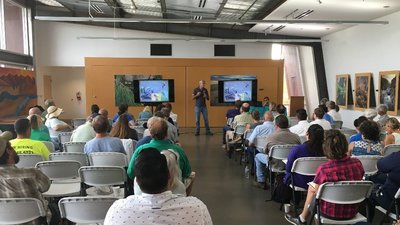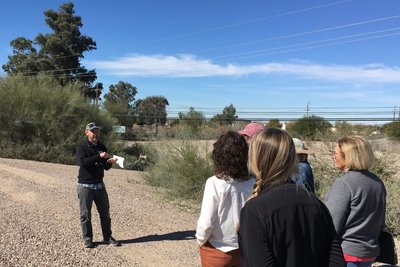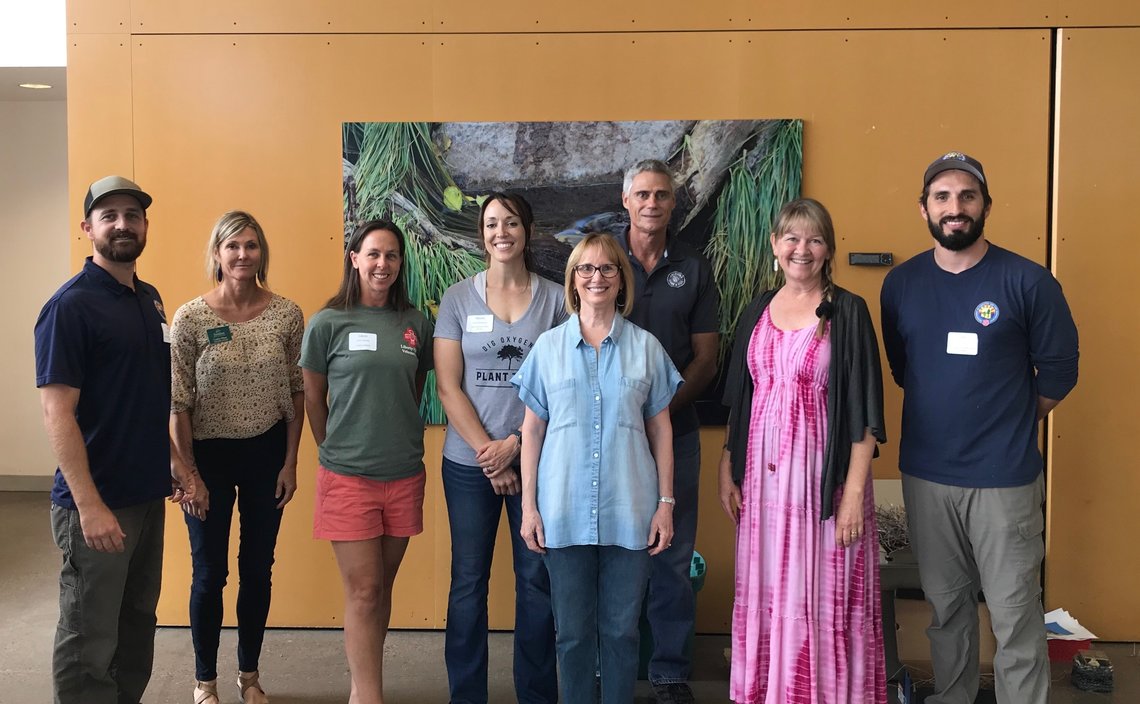By Jon Orona, Urban Forestry Specialist, Arizona Department of Forestry and Fire Management
What is the urban forest? It is the trees and forests right outside of our doorsteps and in our cities, towns, and communities. 130 million acres of America’s forests are considered “urban forests”. Urban forests provide a multitude of social, environmental, and economic benefits including carbon sequestration, air and water filtration, storm water management, energy conservation, improved human health, and habitat for wildlife. The role the urban environment plays for wildlife is often overlooked and undervalued.

Our towns, cities, and communities often provide the essential elements for wildlife to survive such as food, water, and shelter. With increased human growth and loss of habitat through development, urban spaces are becoming more important to wildlife. For example, Peregrine Falcons now exploit tall city buildings for perching and nesting, while enjoying plentiful food resources from prey like Rock Doves and House Sparrows. Many other species rely on urban trees and plants for nesting habitat and food resources.
Maintenance of urban environments fall onto a diverse group of professionals, but when it comes to maintenance of urban forests, we typically entrust this work to arborists or landscape professionals. Tree care professionals typically have a solid understanding of the trees and plants they work with, but not the wildlife that call these environments home. This lack of consideration for wildlife and their habitat can lead to nest failure, habitat loss, lack of species and habitat diversity, and a poor reflection on the tree care industry.

To address these issues and reduce the impact of tree care activities on wildlife, the Tree Care for Birds and Other Wildlife Program was established. As a subprogram of the Western Chapter of the International Society of Arboriculture, the group assembled diverse stakeholders to develop a set of Best Management Practices (BMPs) to guide the industry and the profession. The first guidelines were released in 2018 and were largely tailored to California. Since that time, the Arizona Department of Forestry and Fire Management, along with other partner agencies and organizations, provided feedback to the Program to make the BMPs relevant across a wider range of states. Using the final BMPs and a little Arizona-specific expertise, a Tree Care for Birds and Other Wildlife workshop was held in Phoenix, AZ in July 2019.
The workshop covered a wide variety of topics ranging from the laws and regulations that protect most of the birds species in the United States, to Tree Hazard Management and the importance of considering human safety during tree work. Workshop attendees also participated in a fieldtrip around the Nina Mason Pulliam Rio Salado Audubon Center to get a real world look at wildlife behaviors and habitat. Workshop participants left the workshop with the tools and knowledge to understand the importance of wildlife in our urban forests, integration of a pre-work assessment of a project area prior to conducting tree work to avoid negatively affecting wildlife, and steps to take when a wildlife emergency occurs. Nearly 80 tree care professionals participated in this first workshop. Building on that success, a second training was held in January 2020 in Tucson, AZ with another 40 participants.

As we look toward the future of the Tree Care for Birds and Other Wildlife Program in Arizona, we hope to continue to offer workshops and educational opportunities throughout Arizona. By providing easy-to-use project assessment tools, we aim to assist practitioners in evaluating project areas for not only wildlife and their habitat, but also for Tree Risk Assessment, and Forest Health concerns. Through creation of an official Tree Care Professional Wildlife Certification course, we would recognize individuals that meet the certification requirements through a written examination and field assessment. As we continue to educate the arboriculture community of the needs of wildlife in our urban forests, we hope to encourage a more informed workforce for the betterment of the urban forest and the wildlife that call it home.
This work would not have been possible without support from Audubon Arizona, Arizona Community Tree Council, Arizona Game and Fish Department, Cavity Conservation Initiative, Liberty Wildlife, Tree Care for Birds and Other Wildlife, Tucson Audubon Society, Tucson Wildlife Center, USFWS, USFS, West Coast Arborists, and the Western Chapter International Society of Arboriculture.

